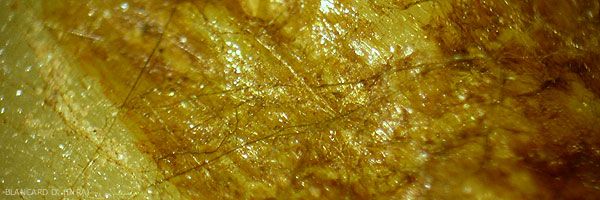
Thanatephorus cucumeris (A. B. Frank) Donk (1956)
Damping off and Bottom rot
,
- Classification: Fungi, Basidiomycota, Cryptomycocolacomycetes, Incertae_sedis_, Cantharellales, Ceratobasidiaceae
- synonyme : Rhizoctonia solani (1858) (anamorphe)
- English names: Damping-off, Bottom rot
- synonyme : Rhizoctonia solani (1858) (anamorphe)
- English names: Damping-off, Bottom rot
Thanatephorus cucumeris is widespread worldwide and widely reported in all salad production areas and in particular in the USA and Europe (Netherlands, England ...). It affects both lettuce and chicory. It is capable of infecting many different hosts (over a hundred). On lettuce, this soil fungus is especially known to cause damping-off in nurseries and basal rots very damaging on plants as they approach maturity, in the field as well as under cover.
In France , it causes some damage from damping off in rather extensive nurseries. But, it is especially dreaded as the harvest approaches. The leaves that it rots oblige producers to treat the plants sometimes in a significant way, to the detriment of the weight of the salads sold. It is considered as a biological marker of "tired" market garden soils which have repeatedly carried salads and / or other sensitive vegetable crops.
The strains of Thanatephorus cucumeris ( Rhizoctonia solani ) have given rise to numerous studies in order to characterize them. Among the differentiation criteria studied, their anastomosis affinities made it possible to establish several groups (GA) and subgroups . The knowledge at our disposal on the strains prevalent on salads is still limited. Several strains belonging to different anastomosis groups are capable of causing damping-off and basal rots on lettuce. This is the case for strains belonging to the AG-1 (AG-1-1B and AG-1-1C), AG-2-2 and AG 4 groups. The AG-1 group includes many very polyphagous strains attacking dicotyledons. , but also the leaf sheaths of grasses. The AG-2 group, subdivided into two subgroups, possibly soon into three, includes relatively specialized strains of crucifers (AG-2-1) or maize and sugar beet (AG-2-2). Strains belonging to AG-4 have Thanatephorus cucumeris (formerly T. pratola ) as teleomorph.
The investigations carried out in France on salads made it possible to detect strains belonging to the AG1 and AG5 anastomosis groups; the latter show less aggressiveness.
In France , it causes some damage from damping off in rather extensive nurseries. But, it is especially dreaded as the harvest approaches. The leaves that it rots oblige producers to treat the plants sometimes in a significant way, to the detriment of the weight of the salads sold. It is considered as a biological marker of "tired" market garden soils which have repeatedly carried salads and / or other sensitive vegetable crops.
The strains of Thanatephorus cucumeris ( Rhizoctonia solani ) have given rise to numerous studies in order to characterize them. Among the differentiation criteria studied, their anastomosis affinities made it possible to establish several groups (GA) and subgroups . The knowledge at our disposal on the strains prevalent on salads is still limited. Several strains belonging to different anastomosis groups are capable of causing damping-off and basal rots on lettuce. This is the case for strains belonging to the AG-1 (AG-1-1B and AG-1-1C), AG-2-2 and AG 4 groups. The AG-1 group includes many very polyphagous strains attacking dicotyledons. , but also the leaf sheaths of grasses. The AG-2 group, subdivided into two subgroups, possibly soon into three, includes relatively specialized strains of crucifers (AG-2-1) or maize and sugar beet (AG-2-2). Strains belonging to AG-4 have Thanatephorus cucumeris (formerly T. pratola ) as teleomorph.
The investigations carried out in France on salads made it possible to detect strains belonging to the AG1 and AG5 anastomosis groups; the latter show less aggressiveness.





